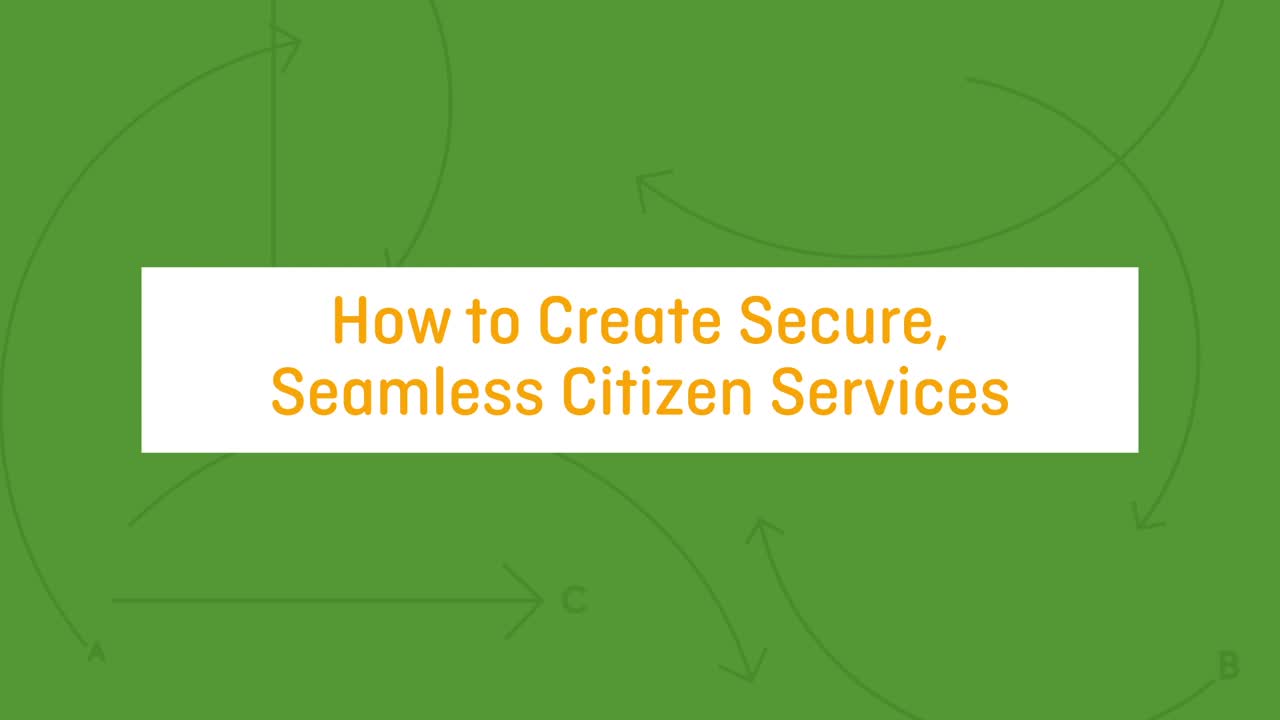Modernizing Government Agencies: 5 Ways CIAM Enhances Citizen Experiences
Of all the service providers we interact with as digital citizens, we’re likely to share some of our most sensitive, personal information with government agencies. Millions of people use government digital services to take care of essential tasks, including applying for health care, filing taxes, or updating their immigration status. Naturally, citizens want to be able to trust these institutions and their online systems.
In a climate where data breaches and data misuse cases are all too frequent, people are expecting greater protections of their personal information. Not only that, but they’re also expecting more seamless experiences—like those offered by digital companies—from the government. If agencies can’t meet these needs, they risk disenfranchising many. And given that the alternatives for citizens are cumbersome—think phone, mail, and office visits—government technology has an opportunity to prove that it is secure and inviting to use.
In this series, we’ll explore how modern customer identity and access management (CIAM)—or in this case, citizen identity and access management—solutions can help government bodies provide better services. Many agencies struggle with using legacy systems to address modern needs, but CIAM can equip the public sector with the right infrastructure to speed up digital development, close security gaps, and become more user-friendly.
An intro to FICAM and ICAM
The call to modernize identity is nothing new for the public sector. In fact, over a decade ago, the federal government began implementing Federal Identity, Credential, and Access Management (FICAM) infrastructure. Simply put, FICAM is the federal application of policies, tools, and systems that let an organization manage, monitor, and secure access to protected electronic and physical resources, such as files, networks, server rooms, and buildings.
FICAM is a form of Identity, Credential, and Access Management (ICAM), a broader set of security principles that allow organizations to grant the right individuals access to permitted resources for the right reasons. In a government context, these principles interact with each other in the following ways:
- Identity management allows a government body to establish a trusted digital identity based on the citizen’s defining attributes, like personal and biometric information. This is necessary for processes like identity proofing, resolution, and account creation and deactivation.
- Credential management lets government agencies associate digital identities with authoritative proof of that claimed identity. Organizations need this for account registration, maintenance, and to issue resources.
- Access management allows organizations to use trusted identities and authoritative credentials to ensure that only permitted individuals have access to protected resources. Government bodies need this to authenticate and authorize citizens, provision accounts, and manage permissions.
Identity and access management is crucial to the government’s ability to deliver public services and maintain secure digital infrastructure. As the U.S. FICAM policy now requires government agencies to create dedicated ICAM teams, agencies have an internal directive to meet along with public demand.
Still, many government agencies use disparate tools that are difficult to maintain and secure. As a result, citizens must navigate through fragmented systems, with multiple applications that require different sets of credentials. Put simply: it’s difficult for citizens to trust and engage with government agencies when their technologies are inaccessible or complicated to use.
Bringing secure and seamless experiences to government with CIAM
Modern CIAM solutions securely manage citizen identity and profile data, providing seamless access to applications and services with five primary capabilities:
- Frictionless user experiences: Users expect the same inviting experiences from government portals as they do from their everyday online activities. Agencies must know and understand their users, and show it by offering consistent experiences across all devices.
- Fast deployment: Developers need tools that allow them to quickly take care of the basics and stay on the cutting edge, implementing effective security and usability features with ease. This allows them to spend more time fulfilling the agency’s mandate, and less time troubleshooting technical issues.
- Centralized access management: As government services grow online, it’s increasingly infeasible to manage access decisions on an app-by-app basis. Agencies that apply access and security policies inconsistently also risk security problems. Managing users, apps, devices, and policies all from one place is essential.
- Scalable security: Agencies need to safeguard citizens’ confidential information and comply with regulations across all applications. They must also provide the right access to the right resources without complicating the user experience.
- FedRAMP authorization: By using a CIAM solution with FedRAMP authorization, federal agencies can centrally store users, create single sign-on experiences, and simplify access to multiple applications, while using identity proofing integrations for further security.
Throughout the rest of this series, we’ll talk in greater detail about how CIAM provides these features to government agencies and improves citizen services as a result.
In the meantime, check out our whitepaper to learn more about how CIAM can improve online government services.


